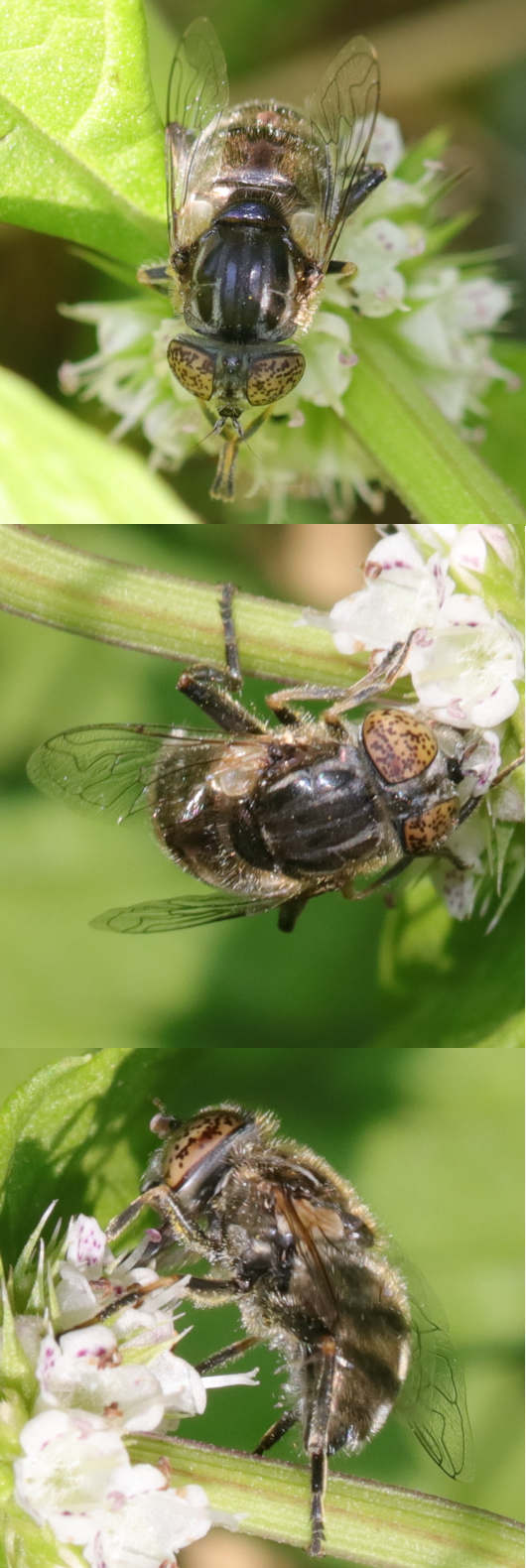Diptera.info :: Family forums :: Syrphidae
Who is here? 1 guest(s)
|
Eristalinus sepulchralis ?
|
|
| MikeP |
Posted on 16-08-2024 19:41
|
|
Member Location: Posts: 155 Joined: 02.08.19 |
Is this Eristalinus sepulchralis? Possible to differentiate from E. aeneus? Image taken on 16. 8. 2024 in Pötzleinsdorf near Vienna. Thank you, Mike MikeP attached the following image:  [114.17Kb] |
|
|
|
| MikeP |
Posted on 20-08-2024 15:36
|
|
Member Location: Posts: 155 Joined: 02.08.19 |
OK, found this: Sahlbergia 27.2 (2021), 11-13 A new character for identification of females of Eristalinus aeneus (Scopoli, 1763) and E. sepulchralis (Linnaeus, 1758) (Diptera: Syrphidae) Jere Kahanpää "Males of the two spotted-eyes Eristalinus species present in Europe north of the Alps, ie. Eristalinus sepulchralis (Linnaeus, 1758) and E. aeneus (Scopoli, 1763), are easily identifiable by the width of the frons between upper compound eyes: eyes touching in E. aeneus, but clearly separated in E. sepulchralis. The females, however, have traditionally been primarily identified by the distribution of hairs on the compound eyes, which is a more difficult character to observe and interpret (van Veen 2004, Haarto & Kerppola 2007, Bartsch et al. 2009). The examination of collected specimens in the author’s collection and in the Finnish Museum of Natural History (MZH), together with numerous pictures of the two species online, revealed another character that may be helpful especially for preliminary field identification or identification from photographs. Adult females of Eristalinus aeneus have an almost lustrous area on the upper frons and vertex surrounding the ocellar triangle (Fig. 1b–c, Fig. 2) The lower/anterior edge of the area lacking microtomentum (dusting, pollinosity) on the upper frons is poorly defined, but the posterior margin between the shining and tomentose area on the vertex is usually clearly defined." So, I would conclude, E. sepulchralis, female.. |
|
|
|
| Jump to Forum: |












